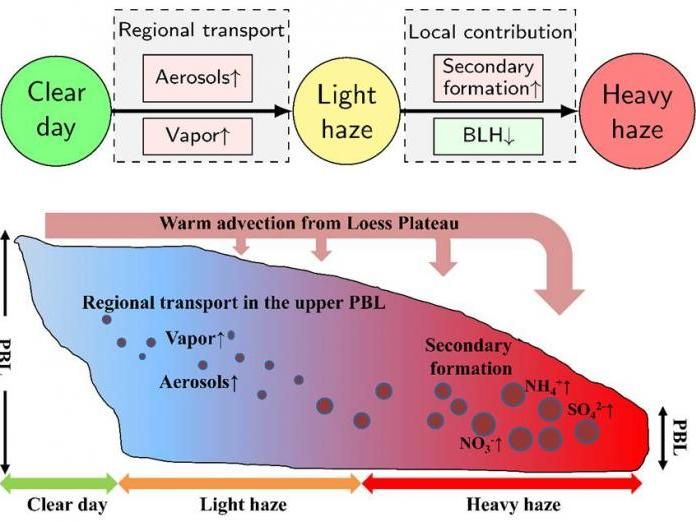Where is heavy air pollution in Beijing from?
Beijing's latest smog alert has dragged on into the first week of 2017. In fact, the joint prevention and control policy for atmospheric pollution in the Beijing-Tianjin-Hebei region was announced after the heavy haze event occurred on 1 January 2013. But it is still uncertain about what or where to control and prevent in detail.

This is a scheme showing the regional pollution over North China Plain
IAP
The research group led by WANG Yuesi from the Institute of Atmospheric Physics (IAP) has monitored the evolution of regional atmospheric mixing layer height (MLH) and attenuated backscattering coefficient in the Beijing-Tianjin-Hebei region for years. Combined with the particle's chemical component online analysis, some highlighted results about the regional heavy haze formation mechanism are obtained. "Beijing is located to the north of the North China Plain. During the initial polluted period, it is affected by southerly transport at the latitude of 500-1000 m." WANG find, "Once the pollution is formed, the MLH will decrease quickly to 500m even lower and increase the pollutant concentration rapidly with compression mechanism. Meanwhile, the hygroscopic growth and heterogeneous chemical processes enhancement under the circumstance of high relative humidity will facilitate the explosive growth of secondary particulate matters."
The co-existence of those factors can further exacerbate the pollution degree. At this time, although the impact of regional transport is less important, the local emitted (such as motor vehicles) pollutants are unable to diffuse, thus will result in a consistent increase of the pollutant concentrations in the MLH.
The heavy haze formation in Beijing is therefore depicted as "initiate by the regional transport mainly from the coal burning in surrounding areas, and intensified by the local secondary formation originated from the motor vehicles". This conclusion is presented in papers written by TANG Guiqian, LIU Zirui, WANG Lili, HU Bo, XIN Jinyuan and ZHU Xiaowan and is confirmed consistently by some new experimental researches.
According to these researches, suggestions are proposed to the environmental protection administration: Pre-warning should be implemented two or three days ahead of the heavy haze coming, and the regional stationary emissions especially the elevated sources should be controlled and reduced in advance. Once the pollution formed, the local emissions should be controlled, thus the peak values of contaminant can be efficiently restrained.
Original publication
Most read news
Original publication
Xiaowan Zhu , Guiqian Tang , Bo Hu , Lili Wang , Jinyuan Xin , Junke Zhang , Zirui Liu , Christoph Münkel , Yuesi Wang; "Regional pollution and its formation mechanism over North China Plain: A case study with ceilometer observations and model simulations"; J. Geophys. Res. Atmos.
Topics
Organizations
Other news from the department science

Get the chemical industry in your inbox
By submitting this form you agree that LUMITOS AG will send you the newsletter(s) selected above by email. Your data will not be passed on to third parties. Your data will be stored and processed in accordance with our data protection regulations. LUMITOS may contact you by email for the purpose of advertising or market and opinion surveys. You can revoke your consent at any time without giving reasons to LUMITOS AG, Ernst-Augustin-Str. 2, 12489 Berlin, Germany or by e-mail at revoke@lumitos.com with effect for the future. In addition, each email contains a link to unsubscribe from the corresponding newsletter.

























































